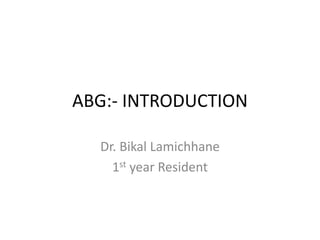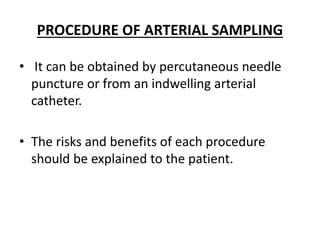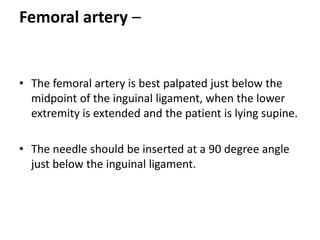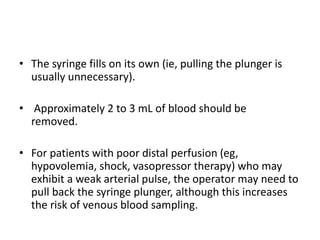1) An arterial blood gas test measures oxygen, carbon dioxide, acidity, oxygen saturation, and bicarbonate levels in arterial blood to monitor acid-base disturbances, assess oxygen and carbon dioxide levels, and detect abnormal hemoglobins.
2) The radial artery is most commonly used for arterial blood gas sampling but other sites like femoral can be used. The modified Allen's test is done to ensure collateral circulation before puncturing the radial artery.
3) Proper technique involves palpating the artery, inserting the needle at 30-45 degrees for radial/brachial or 90 degrees for femoral, withdrawing 2-3mL of blood, applying pressure until hemostasis, and sending the sample



































